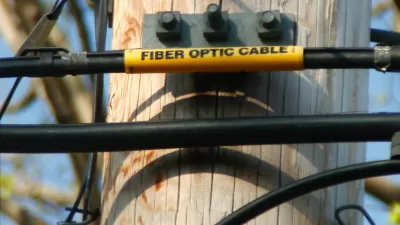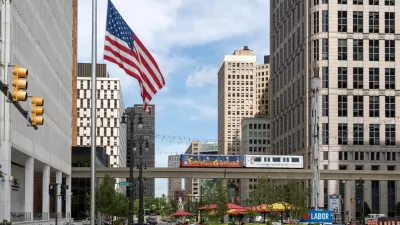Internet connectivity has become as important as basic utilities, but millions of people who live in affordable housing still lack access to devices and connections. Housing managers are finding innovative ways to fix that.

The COVID-19 pandemic has accelerated an already steady shifting of essential services online—with 90 percent of U.S. adults saying the internet has been either essential or important to them, and 40 percent reporting that they have used technology in new ways over the last two years. As a result, access to a high-speed internet connection and a fully capable device has become an essential lifeline to support health, stability, and economic well-being.
But for millions of people—a disproportionate number of whom are people of color—lack of access to connectivity has deepened health and economic inequities. Approximately 28.2 million (nearly 23 percent) of all households in the United States do not have high-speed broadband. While the lack of broadband infrastructure plays a significant role in this, 18.1 million of those households are not online because they cannot afford an available internet connection. The divide is starker among affordable housing residents, where about one-third of households lack home internet access, 80 percent of whom are unconnected because of affordability.
Given the growth of building-wide connectivity solutions, the ability to build and leverage trusted relationships between residents, onsite staff, and service partners to devise solutions, and the new resources available from the federal government, affordable housing and community development organizations are well positioned to narrow this digital divide.
Many organizations are implementing companywide mandates or have incorporated digital access into their strategic plans. For example, National Church Residences has integrated into its strategic plan an ambitious goal to ensure that 90 percent of the residents in its affordable housing communities have access to affordable internet service in their homes by 2025. “The digital road map is ..."
FULL STORY: https://shelterforce.org/2022/03/29/housers-build-bridges-over-the-digital-divide/

Planetizen Federal Action Tracker
A weekly monitor of how Trump’s orders and actions are impacting planners and planning in America.

Map: Where Senate Republicans Want to Sell Your Public Lands
For public land advocates, the Senate Republicans’ proposal to sell millions of acres of public land in the West is “the biggest fight of their careers.”

Restaurant Patios Were a Pandemic Win — Why Were They so Hard to Keep?
Social distancing requirements and changes in travel patterns prompted cities to pilot new uses for street and sidewalk space. Then it got complicated.

DC Area County Eliminates Bus Fares
Montgomery County joins a growing trend of making transit free.

Platform Pilsner: Vancouver Transit Agency Releases... a Beer?
TransLink will receive a portion of every sale of the four-pack.

Toronto Weighs Cheaper Transit, Parking Hikes for Major Events
Special event rates would take effect during large festivals, sports games and concerts to ‘discourage driving, manage congestion and free up space for transit.”
Urban Design for Planners 1: Software Tools
This six-course series explores essential urban design concepts using open source software and equips planners with the tools they need to participate fully in the urban design process.
Planning for Universal Design
Learn the tools for implementing Universal Design in planning regulations.
Heyer Gruel & Associates PA
JM Goldson LLC
Custer County Colorado
City of Camden Redevelopment Agency
City of Astoria
Transportation Research & Education Center (TREC) at Portland State University
Camden Redevelopment Agency
City of Claremont
Municipality of Princeton (NJ)





























